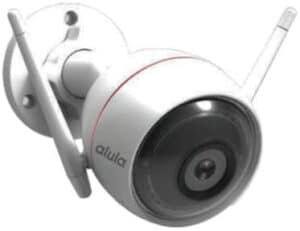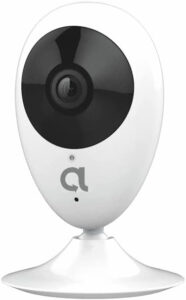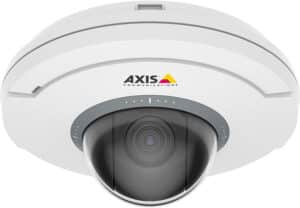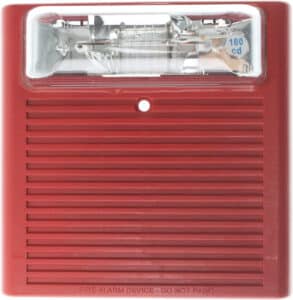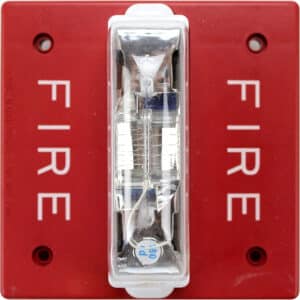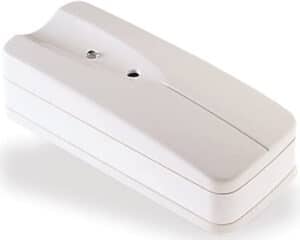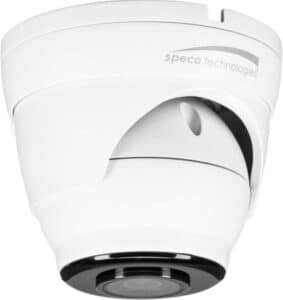The Role of Motion Detection CCTV Cameras to Home Security
As someone who takes home security seriously, I am always on the lookout for the latest technology that can help keep my home safe and secure. In recent years, I have found that motion detection CCTV cameras have become an increasingly popular and effective option for home security. In this article, I will discuss the role of motion sensor cameras in home security, their benefits, and how to maximize their effectiveness.
If you want to learn more on how to choose between analog and digital cctv cameras for your home and business, visit here.
Table of Contents
Understanding Motion Detection CCTV Cameras and How They Work
Motion detection cameras, also known as motion sensor cameras or motion activated cameras, are security cameras that only begin recording when they detect movement within their field of view. This is achieved through the use of advanced sensors that are capable of detecting changes in the environment, such as heat signatures or the presence of moving objects.
There are several types of motion detection technologies used in these cameras, including passive infrared (PIR) sensors, microwave sensors, and video motion detection. PIR sensors are the most common type, as they detect changes in infrared radiation emitted by objects, such as humans or animals, that generate heat. Microwave sensors, on the other hand, emit microwave signals and measure the time it takes for the signals to bounce back after hitting an object. Video motion detection involves analyzing video frames and comparing them to identify any changes that may indicate movement.
When motion is detected, the camera starts recording, and in some cases, sends notifications to the user’s smartphone or other connected devices. This feature allows homeowners to monitor their property remotely and react quickly in case of a security breach.
Benefits of Motion Detection CCTV Cameras for Home Security
There are several advantages to using motion detection cameras as part of a home security system. One of the primary benefits is that these cameras save energy and storage space by only recording when there is movement. This means that users do not have to sift through hours of useless footage to find relevant events, making it easier to review and manage the recorded data.
Another benefit of motion sensor security cameras is that they can help deter potential intruders by making them aware that they are being watched. When a motion activated camera starts recording, it often includes an audible or visual alert, such as a flashing LED light or a notification on the user’s smartphone. This can scare off would-be criminals, as they know they are being monitored and recorded.
Motion detection cameras can also be more cost-effective than traditional security cameras that record continuously. Because they only record when movement is detected, they require less storage and processing power, which can result in lower costs for users.
Different Types of Motion Detection CCTV Cameras Available
There is a wide variety of motion detection cameras available on the market, each with its own set of features and capabilities. Some of the most common types include:
- Wired Motion Detection Cameras: These cameras are connected to a power source and a recording device through cables. They are known for their reliability and high-quality video but may require professional installation due to the wiring involved.
- Wireless Motion Detection Cameras: These cameras use Wi-Fi or other wireless protocols to transmit video and data to a recording device or a cloud storage service. They are easier to install and can be more flexible in terms of placement, but may suffer from interference or signal loss.
- Outdoor Motion Sensor Cameras: Designed specifically for outdoor use, these cameras are built with durable materials to withstand harsh weather conditions and feature night vision capabilities for monitoring in low light conditions.
- Indoor Motion Sensor Cameras: These cameras are designed for indoor use and may include features such as two-way audio, allowing the user to communicate with people in the monitored area.
When choosing a motion detection camera, it is essential to consider factors such as the intended location, desired features, and budget to ensure that the selected camera meets the user’s specific needs.
Placement of Motion Detection CCTV Cameras for Maximum Effectiveness
The placement of motion detection cameras is crucial in maximizing their effectiveness as part of a home security system. Here are some tips for optimal camera placement:
- Cover entry points: Place cameras near doors and windows, as these are the most common entry points for intruders. This will help you capture clear footage of anyone attempting to break into your home.
- Monitor high-traffic areas: Position cameras in areas where people frequently pass by, such as hallways, staircases, or the living room. This will increase the chances of capturing any suspicious activity.
- Elevate the cameras: Mount cameras at least 8-10 feet above the ground to provide a better field of view and make it more difficult for intruders to tamper with the cameras.
- Ensure proper lighting: For cameras with night vision capabilities, make sure there is enough ambient light for the camera to function effectively. For cameras without night vision, consider installing motion sensor lights to illuminate the area when motion is detected.
Secure your home like a pro by strategically placing motion detection cameras to ensure maximum effectiveness in detecting any breaches.
How to Install Motion Detection CCTV Cameras at Home
Installing motion detection cameras at home can be a relatively simple process, especially for wireless models. However, it is essential to follow the manufacturer’s instructions and take necessary precautions to ensure the cameras are installed correctly and securely. Here are some general steps to follow when installing motion sensor cameras:
- Select the location: Choose the optimal location for each camera, considering factors such as field of view, lighting, and ease of installation.
- Mount the camera: Use the provided mounting hardware to securely attach the camera to the chosen surface. Ensure that the camera is level and firmly fastened.
- Configure the settings: Connect the camera to a power source (if necessary) and follow the manufacturer’s instructions to set up the camera’s motion detection settings, including sensitivity and recording preferences.
- Test the system: Once the camera is installed and configured, test the motion detection capabilities and adjust the settings as needed.
If you are unsure about any aspect of the installation process or if you are dealing with a wired camera that requires electrical work, it is best to consult a professional installer like Go Safer Security to ensure the job is done correctly and safely.
Motion Detection CCTV Cameras vs. Traditional Security Systems
When comparing motion detection CCTV cameras to traditional security systems, it’s essential to consider the specific needs and goals of the user. Traditional security systems can include a combination of door and window sensors, motion detectors, and security cameras that continuously record. These systems often require professional installation and monitoring, which can be more expensive than motion detection cameras.
Motion detection cameras, on the other hand, offer a more focused and efficient approach to home security. They only record when movement is detected, making it easier to review and manage the recorded footage. Additionally, motion sensor cameras can be more cost-effective and easier to install and maintain than traditional security systems.
Whether you choose motion detection cameras or traditional security systems depends entirely on what you value more: seamless functionality, affordability, or specific security needs. The decision is entirely yours!
How Motion Detection CCTV Cameras Can Prevent Break-Ins and Theft
One of the primary roles of motion detection cameras in home security is their ability to help prevent break-ins and theft. These cameras can act as a deterrent to potential intruders, as they are often visible and can alert the homeowner when motion is detected. In this way, motion sensor cameras can help discourage criminal activity before it even occurs.
In addition to serving as a deterrent, motion detection cameras can also provide valuable evidence in the event of a break-in or theft. The recorded footage can be used to identify suspects and provide law enforcement with crucial information that can aid in their investigation.
The Role of Motion Detection CCTV Cameras in Identifying Suspects for Law Enforcement
Motion detection cameras play a critical role in helping law enforcement identify suspects and solve crimes. The recorded footage from these cameras can provide clear images of intruders, allowing law enforcement to identify and apprehend suspects more quickly and efficiently.
Additionally, motion sensor cameras can help law enforcement establish a timeline of events and gather additional evidence. This can be particularly useful in cases where multiple crimes have been committed, as the footage can help investigators determine if the same individual or group of individuals is responsible for each incident.
Motion detection cameras play a crucial role in enhancing the safety and security of homes and communities by providing law enforcement with vital evidence and information. Their contribution cannot be overstated.
Night Vision and Motion Detection CCTV Cameras – How They Work Together
Night vision is an essential feature for many motion detection cameras, as it allows the camera to capture clear footage even in low light conditions. This is particularly important for outdoor motion sensor cameras, as they often need to monitor areas with limited or no lighting during nighttime hours.
Night vision technology works by amplifying the available ambient light to create a visible image. Most motion detection cameras with night vision capabilities use infrared (IR) LEDs to emit infrared light, which is invisible to the human eye but can be detected by the camera’s sensor. This allows the camera to “see” in the dark and provide clear, detailed footage even in low light conditions.
When combined with motion detection capabilities, night vision technology significantly enhances the effectiveness of security cameras, ensuring that they can provide reliable monitoring and protection around the clock.
Integrating Motion Detection CCTV Cameras with Home Automation Systems
One of the most significant advantages of modern motion detection cameras is their compatibility with home automation systems. This integration allows users to create a comprehensive and interconnected security system that can be easily managed and controlled from a single interface.
For example, motion sensor cameras can be connected to smart lighting systems, allowing the lights to turn on automatically when motion is detected. This can help deter intruders and also provide additional lighting for the camera to capture clear footage. Similarly, motion detection cameras can be integrated with smart locks and doorbells, allowing users to receive notifications and remotely control access to their home.
Level up your home security game with motion detection cameras integrated with a top-notch home automation system, giving you complete control and ultimate peace of mind, all while enjoying the added convenience of automated security alerts and actions.
How Smartphones and Other Devices Can Access Motion Detection CCTV Cameras
Another advantage of modern motion detection cameras is their ability to connect to smartphones and other devices, allowing users to remotely access and control their security system. This is typically achieved through a dedicated app provided by the camera manufacturer or a third-party home automation platform.
By connecting their motion sensor cameras to their smartphones, users can receive real-time notifications when motion is detected, view live and recorded footage, and even control camera settings, such as motion sensitivity and recording preferences. This remote access not only provides increased convenience and control, but it also enables users to respond quickly in case of a security breach, even if they are not at home.
The Importance of Regular Maintenance for Motion Detection CCTV Cameras
To ensure the continued effectiveness and reliability of motion detection cameras, it is essential to perform regular maintenance. This includes tasks such as:
- Cleaning the camera lens: Over time, dirt and dust can accumulate on the camera lens, reducing the clarity of the recorded footage. Regularly cleaning the lens with a soft cloth or lens cleaner can help maintain the camera’s performance.
- Checking the camera’s field of view: Ensure that the camera’s field of view is not obstructed by objects, such as plants or furniture. Periodically adjusting the camera’s position or angle may be necessary to maintain a clear view of the monitored area.
- Updating the camera’s firmware: Manufacturers often release firmware updates to address bugs or improve performance. Regularly check for and install any available updates to ensure the camera is functioning optimally.
- Inspecting the camera’s connections: For wired cameras, inspect the cables and connections for signs of wear or damage. For wireless cameras, ensure that the Wi-Fi signal is strong and stable.
Regular maintenance is crucial to keep your motion detection cameras in top-notch condition and guarantee continuous, dependable protection and monitoring for years to come. Neglecting this essential upkeep can shorten the lifespan of your cameras and jeopardize the safety of your assets or loved ones.
Common Mistakes to Avoid When Using Motion Detection CCTV Cameras
While motion detection cameras can be highly effective in securing a home, there are some common mistakes that users should avoid to ensure optimal performance. These include:
- Ignoring false alarms: While motion detection cameras can occasionally produce false alarms due to factors such as wind or small animals, it’s essential to investigate each alert to ensure that it is not a genuine security threat.
- Failing to adjust sensitivity settings: Many motion detection cameras allow users to adjust the sensitivity of the motion sensors. Failing to adjust these settings can result in too many false alarms or missed events.
- Improper placement: Placing motion detection cameras in areas with poor lighting or obstructed views can significantly reduce their effectiveness. Ensure that each camera is strategically placed to provide the best possible coverage of the monitored area.
- Neglecting maintenance: Regular maintenance, as discussed earlier, is crucial in ensuring the continued performance and reliability of motion detection cameras.
It’s crucial to steer clear of these typical blunders when setting up motion detection cameras, as they can significantly enhance your home’s safety and safeguarding, allowing you to sleep peacefully at night with complete peace of mind.
Conclusion
We have explored the vital role of motion detection CCTV cameras in ensuring home security. They are an investment that provides priceless peace of mind for homeowners. By taking advantage of the technological advancements in home security, homeowners can protect their properties against potential threats and intruders.
At Xcessory Zone, we understand the importance of home security and provide top-of-the-line DIY home security products that are easy to install and use. From motion detection cameras to smart locks and alarm systems, we have got you covered. Our products are designed to cater to different needs and budgets, ensuring that everyone can enjoy the ultimate home security.
Don’t wait until it’s too late! Take action now, and secure your home with Xcessory Zone DIY home security products. Visit our e-commerce store today to get started and experience peace of mind like never before!
FAQs
How reliable are motion detection CCTV cameras for home security?
Motion detection CCTV cameras are highly reliable for home security. They use advanced technology to detect movement in their field of view and immediately alert the homeowner or security team. With the added benefit of remote monitoring, homeowners can access the footage of the camera any time from anywhere and ensure their home is protected round the clock.
Can motion detection CCTV cameras identify intruders at night?
Yes, motion detection CCTV cameras can easily detect intruders at night. They use infrared technology to capture footage even in complete darkness. The cameras can detect movement and alert the homeowner or security team about intruders in real-time. Additionally, some motion detection CCTV cameras also come with built-in lights that automatically turn on when motion is detected, further enhancing their visibility.
Can motion detection CCTV cameras be easily hacked?
Motion detection CCTV cameras can be vulnerable to hacking if not set up correctly. However, homeowners can take the necessary precautions to prevent hacking by using strong passwords, regularly updating their firmware, and ensuring their cameras adhere to industry standards for encryption and security. By following these measures, homeowners can significantly reduce the risk of unauthorized access to their home security footage.
Meet Our Partners!




